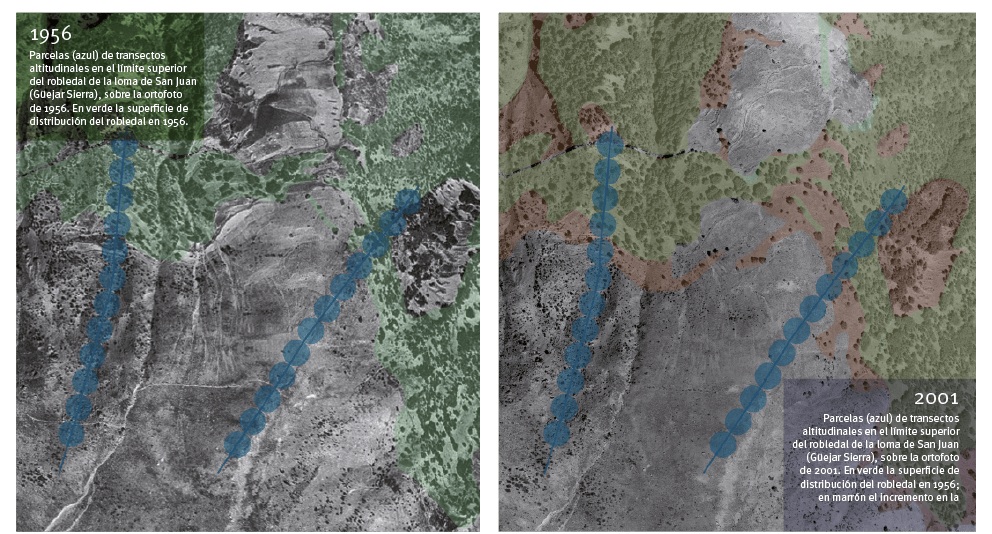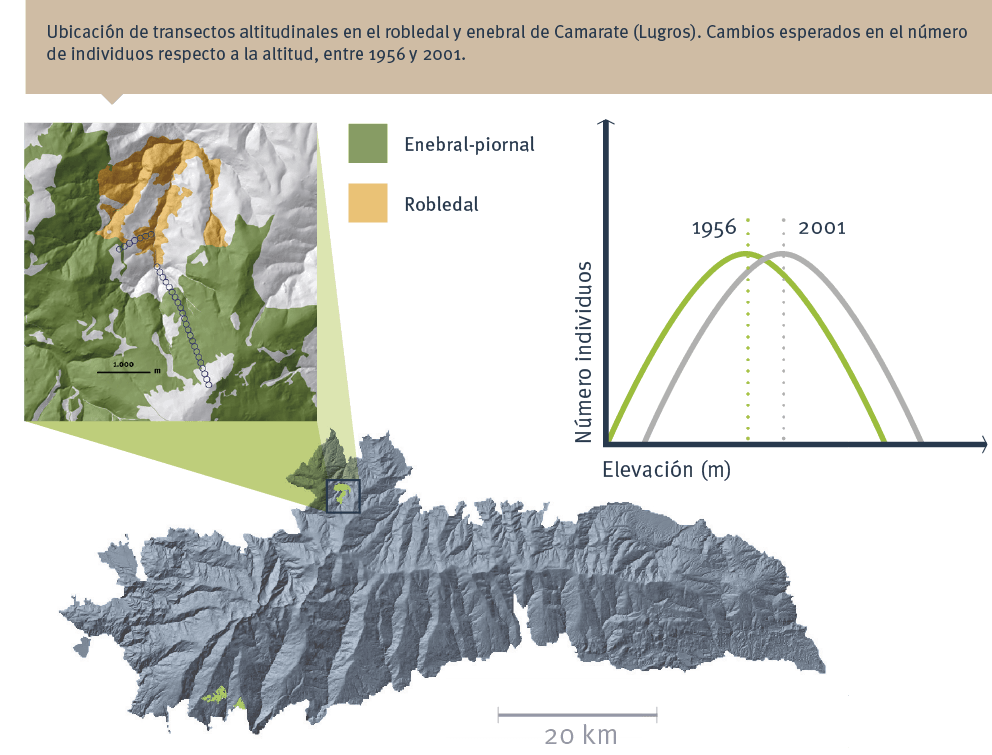Aims
- To provide a detailed characterization of the changes in the main plant formations of Sierra Nevada.
- To quantify the temporal variations in density and degree of coverage of the main species in relation to elevation.

Method and effort
The detailed delineation of plant formations is superimposed over aerial orthorectified photographs of different dates (working scale 1:5,000-1:8,000). Certain zones within the distribution area of the formation are selected to make comparisons between dates, considering the availability of data as well as their quality. In these preselected areas, a series of 1-ha circular plots are randomly distributed. The individuals of the main species are counted and the coverage of this species estimated for the different dates.
In addition, a series of transects are laid out by photointerpretation according to an altitudinal gradient. Over each transect, tangential circles (the size is c. 30 m in radius) are drawn covering the distribution range of the oak forests and juniper thickets (1100 m to 2700 m). The working scale varies between 1:3,000 and 1:5,000. In these plots, the photointerpretation is made recording the variables of interest for each date.

Periodicity
At present, there are photos of Sierra Nevada of sufficient quality for the dates: 1956, 1977, 1984, 1998, 2001, 2004, 2007, and 2009.
References
Allen, C.D. y Breshears, D.D. 1998. Drought-induced shift of a forest-woodland ecotone: Rapid landscape response to climate variation. PNAS, 95 (25): 14839–14842
Navarro González, I. y Bonet García, F.J. 2010. Vegetation cover changes in Sierra Nevada mountains (Spain) during the past 50 years and relation to land use and climate change. p. 53. En: 2ª International GMBA-DIVERSITAS Conference “Functional significance of mountain biodiversity”. Chandolin, Switzerland. 27 – 30 Jul. Conference abstracts.
Sanz-Elorza, M., Dana, E., González, A. y Sobrino, E. 2003. Changes in the high-mountain vegetation of the central Iberian Peninsula as a probable sign of global warming. Ann. Bot., 92:273–280.